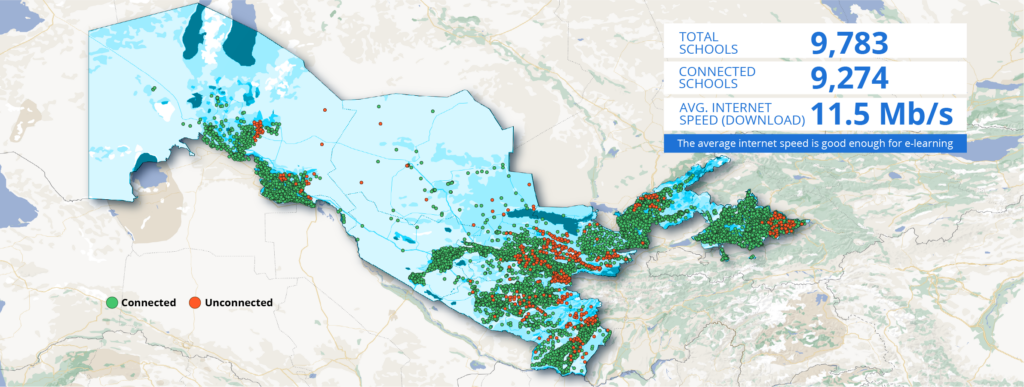Introduction
The cost to close the digital divide is significant and perpetual in nature. Beyond the initial capital expenditure required to connect a school, hospital or other public institution to the internet, internet access involves ongoing operating expenses, including monthly service fees, maintenance fees and electricity costs. These ongoing expenses represent a challenge to federal and municipal governments as they are often new budget line items competing with already existing budgetary constraints.
To advance the government’s school connectivity initiative, Giga canvassed the market for technology solutions, ultimately partnering with a local provider, to prototype a sustainable, “self-sufficient” commercial model for school connectivity. In August 2022, Giga partnering with Uzbekistan Government and Uztelecom, a local provider, began implementing a scalable solution in which schools act as “connectivity hubs” and redistribute internet access to households, businesses and other institutions within a 5-kilometer radius.

Purpose and conclusion
The purpose of this case study is to examine the potential for schools to serve as hubs for connectivity. Schools are anchors for community interaction; they serve not only as a place where learners can connect with each other and with teachers, but also as a destination where people meet and engage in social activity. By design, schools are population hotspots. Giga is exploring how they can also become hubs for high-speed connectivity and provide valuable services that ultimately empower communities.

